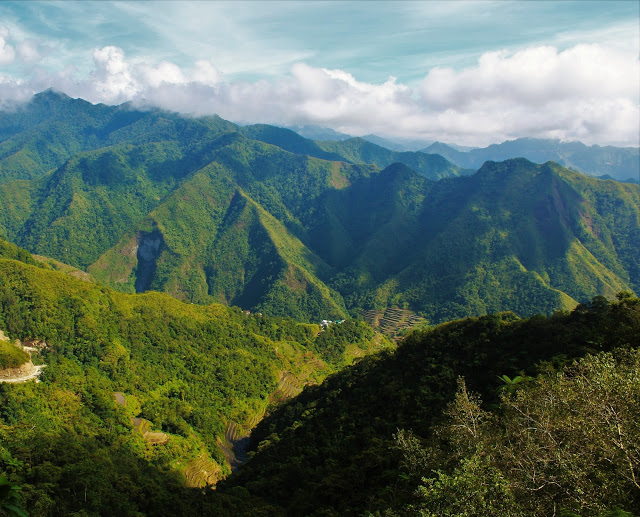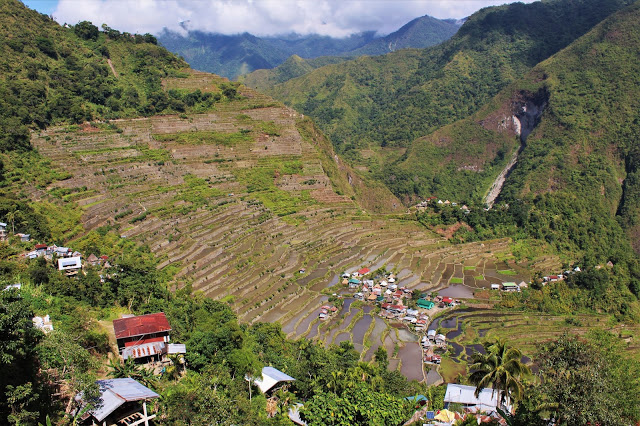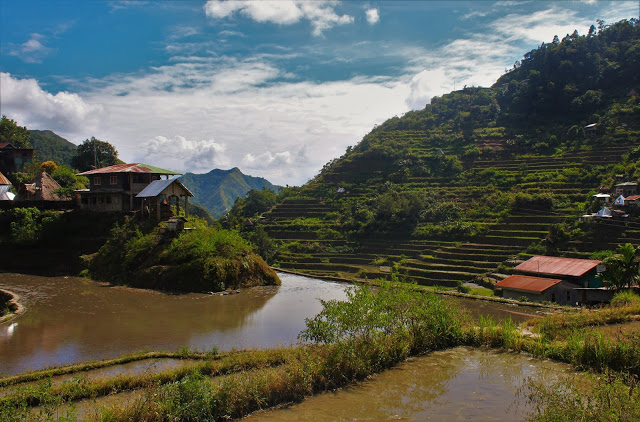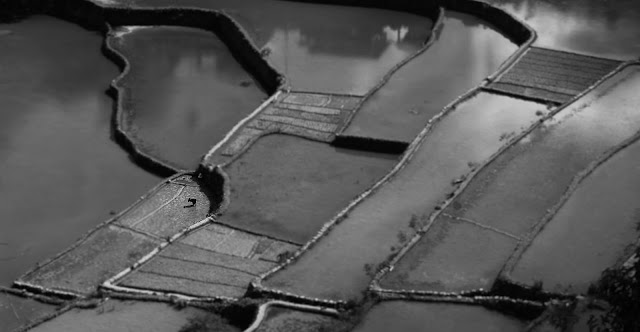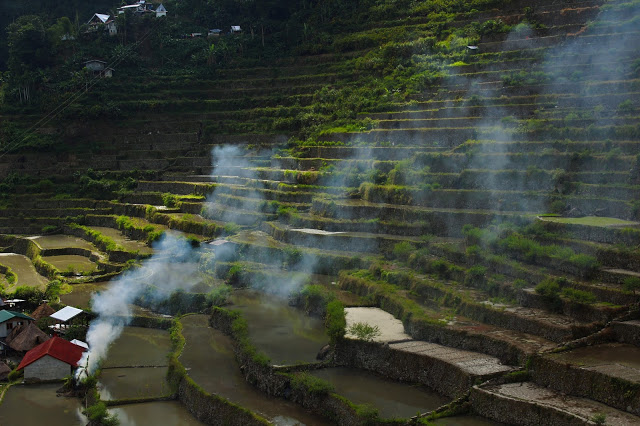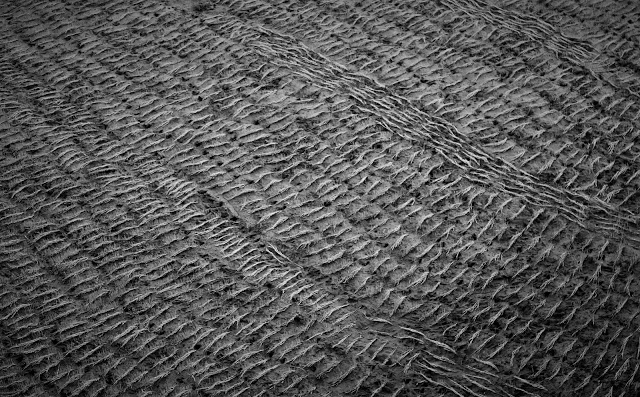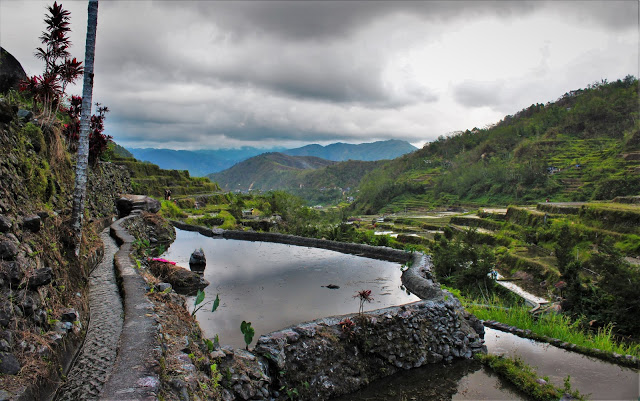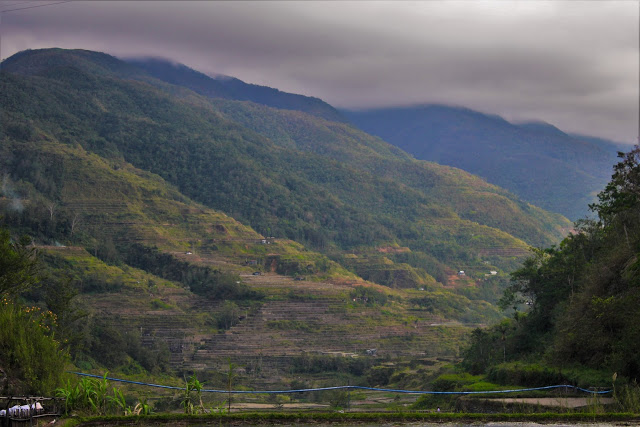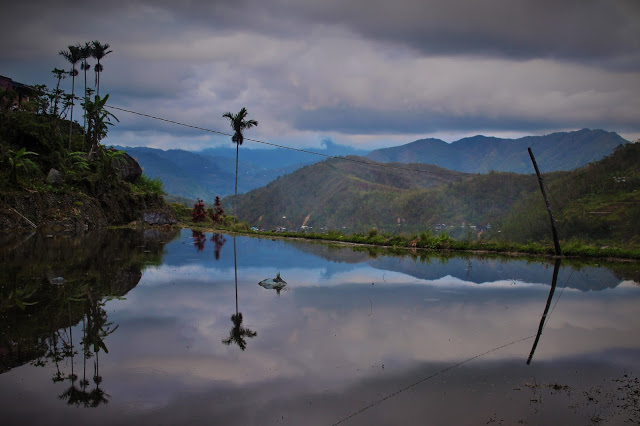The Rice Terraces of the Cordillera Mountains
At one point, as the clouds overhead thickened, someone lit a small bonfire. It burned brightly and a cloud of grey smoke wafted up the side of the mountain. Within minutes, the fire had died down once more and the smoke all but gone. I bought a bottle of coke from a wizened old woman who was selling it nearby and ate a packet of peanuts, leaning with my back against the sun-soaked wall and enjoying the stillness and the warm air.
The rice terraces of the Cordillera Mountains were truly stunning. Of all the places I went to the in the Philippines, Batad and Banaue were perhaps my two favourite spots, mainly because of the fantastic scenery and amazing, endless terraces and paddy fields. Regular readers will know I’m also a sucker for mountains – any sort, anywhere! If you’re ever in the Philippines, I highly recommend that you take the time to go to Banaue and visit the rice terraces. We spent three nights in the area and I could have stayed longer.


